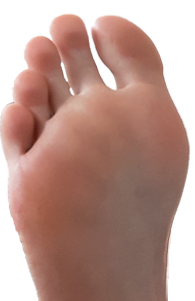What is Metatarsalgia?
If you have been diagnosed with metatarsalgia, you may be wondering what it is and what to do about it. Metatarsalgia is one of the more common conditions that a Canadian Certified Pedorthist can see in the clinic. Overall, the diagnosis can be a very simple explanation, but there is a deeper explanation as well.
What is Metatarsalgia?
The simple explanation of metatarsalgia is pain at the ball of the foot. When you look deeper, metatarsalgia is actually a group of different conditions that all cause pain at the ball of the foot but in different ways. A few of these conditions are morton’s neuroma, capsulitis, synovitis, avascular necrosis, and a capsular tear.
Morton’s Neuroma
Morton’s neuroma is when a nerve is irritated and causes pain into the toes. The nerve commonly affected is between the third and fourth toe, but the other toes can be affected as well. The third and fourth toe is most affected because this space is narrower than the rest.
Capsulitis
Capsulitis is when there is inflammation of the ligaments and irritation at the bones at the ball of the foot (metatarsal head). This pain is felt directly under the ball of the foot, where the bones are most prominent.
Synovitis
Synovitis is when there is irritation at the toe joint. This can lead to swelling, redness and pain at the joint. In this case, it’s a good idea to have your doctor take a look as this may be related to rheumatoid arthritis.
Avascular Necrosis
Avascular necrosis is when there is irritation specifically to the bone under the ball of the foot at the second toe (metatarsal head). This occurs when the second metatarsal head has repetitive stress to the area. There may be swelling and redness under the second toe, and the toe may not move as freely as the others.
Capsular Tear
A capsular tear occurs when the structure under the bone at the ball of the foot (metatarsal head) tears. This develops when there is excessive and/or repetitive strain at the joint. You may notice that the affected toe is separated into a V and/or a clawed, hammer or mallet toe is present. There may be swelling in the area and pain with motion at the joint.
 Causes of Metatarsalgia
Causes of Metatarsalgia
Metatarsalgia can be caused from the way your feet are or a certain activity.
One of the more common ways to develop metatarsalgia is if you have a collapsed arch at the ball of the foot (metatarsal arch). This collapsed arch increases pressure to the ball of the foot and the structures surrounding it. This can lead to irritation of the structures, pain and a metatarsalgia diagnosis.
Activities that increase stress and strain to the ball of the foot can lead to an overuse injury and a metatarsalgia diagnosis. A few examples of these activities are consistent bending of the toes, on the ball of the feet excessively, or squatting down on the ball of the feet constantly. These activities in combination with abnormal motion in the feet significantly increases the chances of developing pain.
Treating Metatarsalgia
In many cases, a custom foot orthotic can relieve pain from metatarsalgia. A specific support on the orthotic, called a metatarsal pad, lifts up the arch at the ball of the foot to release pressure.
Certain shoes can also help to relieve pressure causing metatarsalgia. As a general rule, a strong rocker sole will help reduce pressure to the ball of the foot. This is when the curve at the front of the shoe is more aggressive.
Other health practitioners will also have their own way of dealing with metatarsalgia symptoms. For example, massage therapy can help to relieve any muscle tension that is causing additional stress and strain to the painful structures.
Conclusion
Although metatarsalgia can be confusing with many different diagnoses within the metatarsalgia diagnosis, the treatment can be very similar for the sufferer. We offload the area of pressure to relieve pain and prevent it from returning!
If you have any questions, feel free to book an appointment or contact us.
